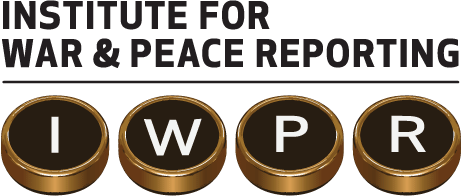Al-Nusra Front and the Islamic State in Iraq and Syria: a Cold War in Raqqa

(Raqqa, Syria) – The Free Syrian Army (FSA) has been effectively driven out of Raqqa. Three Salafist groups now dominate the city: the Islamic Movement of Ahrar al-Sham, Al-Nusra Front, and the Islamic State in Iraq and Syria (ISIS). In light of this new reality, these factions have come to include the greatest number of other battalions, including those that fought under the banner of the FSA. Fighters in the FSA who did not join any of the dominant factions left the city. But the strongest competition is between Al-Nusra Front and ISIS, both of which claim to represent Al-Qaeda in Syria.

On December 6, ISIS announced on Twitter the assassination of its official responsible for Sharia law, Atiyya Mofdy al-Anzy, a Saudi national, at a checkpoint manned by fighters from Nusra, which had accused ISIS of kidnapping its leader, known as Abu Saad, in September.
The two organizations began mobilizing after the broadcast of a voice recording by Al-Qaeda leader Ayman al-Zawahiry on Al-Jazeera on November 8. In his announcement, Zawahiry limited the legitimacy of ISIS to Iraq only, and designated Al-Nusra Front as Al-Qaeda’s representative in Syria.
After the announcement, both sides bolstered their patrols, while Al-Nusra Front and a group of its civilian supporters welcomed Zawahiry’s decision in a public gathering. In what seemed like a challenge to the decision, according to a civilian who was present at Al-Nusra Front’s celebration, ISIS staged a similar event in the same place two days later.
The tension between Al-Nusra Front and ISIS peaked on November 24, when fighters from the latter group encircled the former palace of the governor, which is now the headquarters of Jabhat Attawheed, which fights alongside Al-Nusra Front. They fired a barrage of shots in the air, which led Al-Nusra Front to withdraw a large number of its fighters from the area surrounding the Syrian Army’s Division 17 and send them to the besieged Jabhat Attawheed headquarters. ISIS fighters withdrew before they arrived.
This incident occurred after several skirmishes between the two sides. A media source in a battalion allied with Al-Nusra Front who did not disclose his name said that on November 7 three fighters in the Hamarrat area outside the city defected to ISIS, taking with them 23 millimetre machine guns and two vans. According to the source, the defected fighters along with other members of ISIS attacked an Al-Nusra Front checkpoint at the brick factory on the outskirts of Raqqa. A fighter from Al-Nusra Front who was present at the checkpoint confirmed this, saying that the attackers confiscated their weapons and forced them to either pledge allegiance to ISIS or lay down their weapons. Fifteen fighters joined the ranks of ISIS, while the rest announced that they would no longer fight.
On the same day, ISIS fighters attacked the Maqalla checkpoint on the eastern suburbs of the city and forced those they captured to either pledge allegiance to them or refrain from further military action. He added that a Sharia official from Al-Nusra Front visited the headquarters of ISIS hoping to retrieve the weapons they lost, but to no avail.
Rumours spread that large numbers of foreign fighters from ISIS left to Iraq immediately after Al-Zawahiri’s announcement, and that many defected to Al-Nusra Front. The aforementioned media source denied this, saying that only 15 foreign fighters from the Islamic State defected to the other side in Aleppo, and not in Raqqa.
The media office of Al-Nusra Front in Raqqa declined to comment on any of these reports.
Al-Nusra Front has gained the support of some civilian opposition activists, especially since it has fighters who are besieging the government-controlled Division 17 headquarters. The Islamist militia has been trying to garner more support by releasing statements prohibiting its fighters from wearing masks so that they would not be accused of kidnapping. It also announced its commitment to protecting minorities, including Christians. Recently, several media offices closed because of an increase of kidnappings that targeted activists. Some accused ISIS of being responsible for the kidnappings, and of also attacking two churches in September.
In another development, battles continue around Division 17’s headquarters’ complex, which is located only three kilometres north of the city. One of the fiercest battles around these headquarters so far took place on the morning of Wednesday, November 20. Media activists close to opposition factions claimed that the latter had taken over the building housing the Greenhorns Battalion, facing the building where most of Division 17’s commanders are located, in addition to a gas station and part of the soldiers’ barracks. The headquarters are besieged by Ahrar Al-Sham, Al-Nusra Front, and Huthaifa Bin al-Yaman Battalions, a group allied with the moderate Islamic Jabhat al-Asalah wa al-Tanmia (Authenticity and Development Front). Opposition forces have dominated more than half of the Division 17’s headquarters area, which is around five square kilometres, according to the same sources.
Raqqa has been subject to sporadic aerial bombardment since the opposition’s take-over of the city in March 2013. Most of the air raids target residential civilian areas, particularly those located near opposition factions’ headquarters. Government fighter jets conducted eight air raids on December 8, killing around 20 people including women and children, according to activists from Raqqa.
A number of surface-to-surface missiles have also hit the city, including three missiles in three consecutive days in November. The most destructive of them hit the city on November 28, killing 40 civilians and injuring dozens more. A bakery and the historic Cardamom Souk were completely destroyed, which led people to assume that it was a Scud missile due to the scale of the destruction.
